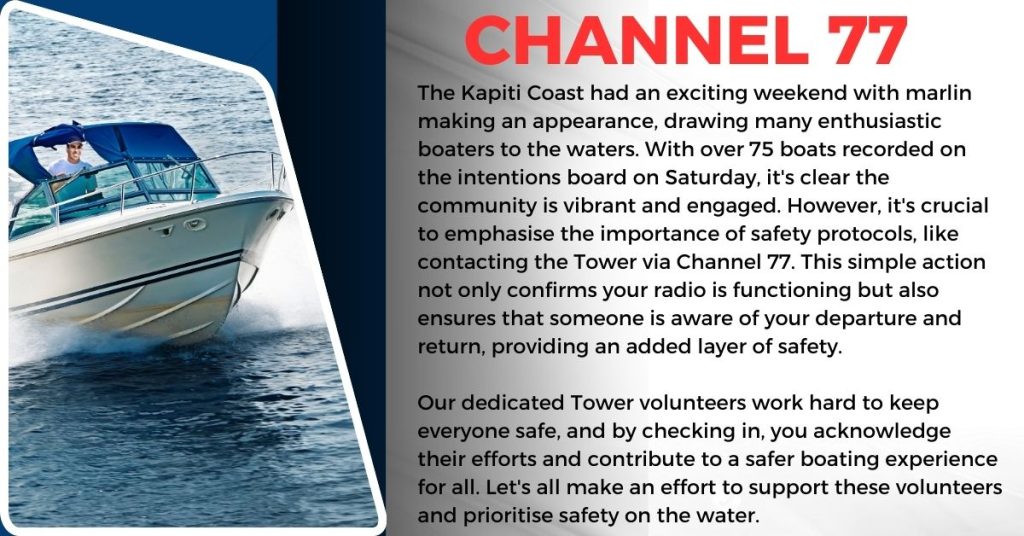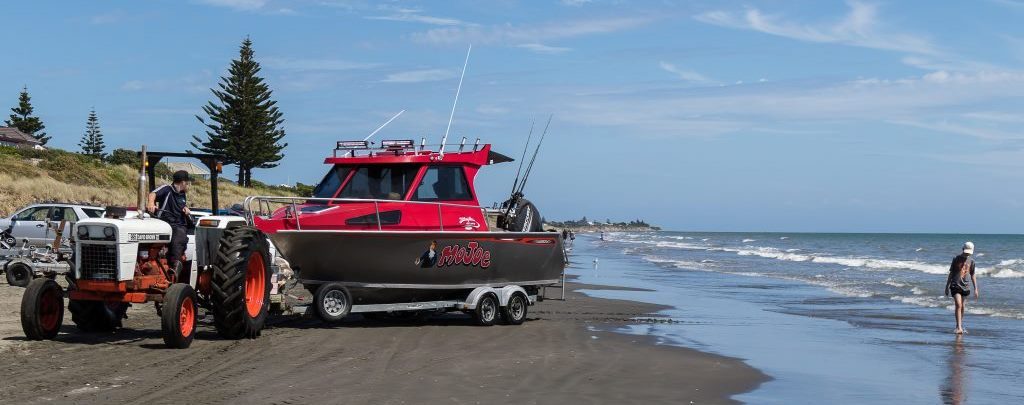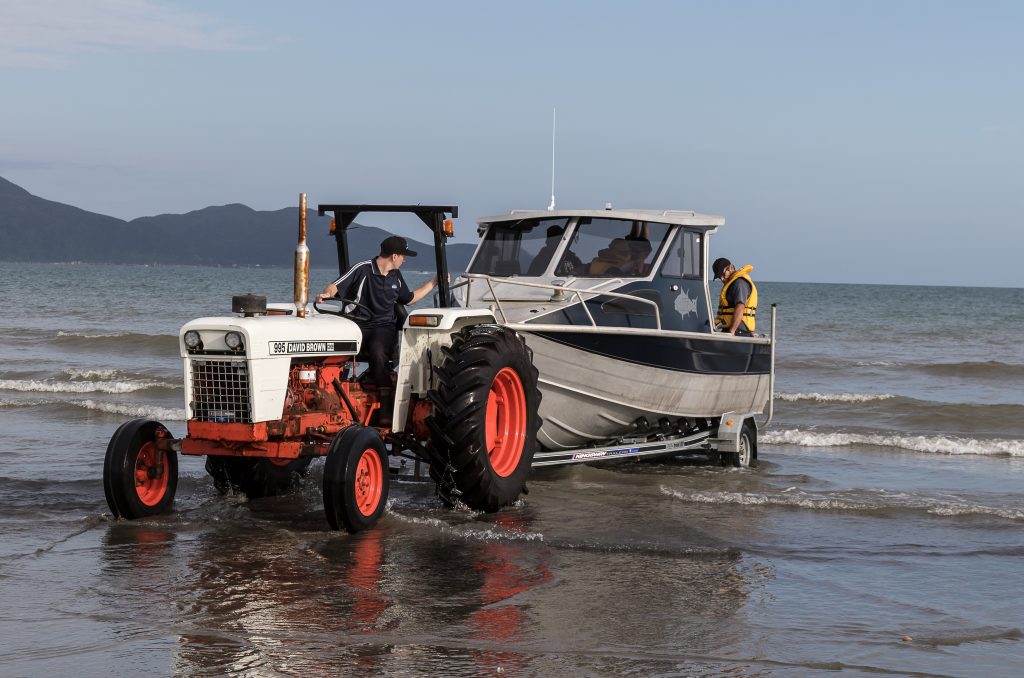Notice from February 2025

BEACH LAUNCHING AND IT’S CHALLENGES

For new members and some not so new, launching and retrieving can be quite daunting.
- PREPARATION
Most members live within a few kms of the beach so before you leave home, run the motor for a few mins to:
- know that it goes
- know it will start when it is launched
(There’s nothing more embarrassing than launching a boat, parking your trailer and then finding out your boat won’t start).
Article 2. THE CHALLENGES OF BEACH LAUNCHING
Upon arrival at the Club, part of the preparation should include taking a couple of minutes to watch sea conditions and wave patterns. This is going to help with the launching of your boat. You will notice, for example, that on an outgoing tide and on shore wind the waves stand up more.
Waves generally come on the beach in sets, so by observing conditions for a couple of minutes this allows you to develop a plan to launch your boat between sets.
Launching by yourself should only be attempted if you are an experienced boatie.
Article 3. THE BIG NO, NO, OF BEACH LAUNCHING
This week is a reminder that one of the big No, No’s of a beach launch and retrieve is that you do not float your boat off or on your trailer. This practice is very dangerous.
It will only take one rogue wave to hit the rear of your boat once it is floating. The consequence of this may be the potential for someone to get hurt or cause damage to your boat or trailer.
Article 4. LAUNCHING TECHNIQUE
Having already prepared your boat by removing tie downs etc:
- Back your boat down to the water’s edge.
- Lower hydraulics to a point where your boat won’t roll off the trailer when the winch rope and safety chain is disconnected.
- When wave patterns allow, back your trailer steadily into the sea only to a depth where you know the boat will float when the hydraulics are raised. (This is usually at the point when the trailer mudguards become submerged).
- Raise the hydraulics and with either a dab on the brakes or change in direction the boat should slide off allowing you to go and park your trailer on the beach.
Should there be an onshore sea swell it is a good idea to launch your boat at a slight angle. This technique reduces the chance of waves coming over the stern of your boat.
NB: This practice should be used with caution as if you launch at too great an angle there is potential for a rogue wave to put your boat up on the mudguard of your trailer.
Article 5. BOAT HANDLING
Now that your boat is off the trailer and floating, someone should quickly turn the boat and hold it facing the incoming waves for you, while you park your trailer.
A safe way to hold the boat in the sea is to hold it from the side towards the rear.
Don’t stand behind it as any big sea swell or wave may put the boat on top of you.
Article 6. BOAT RETRIEVAL
A surprising number of people get this wrong.
When coming into the beach, beware of swimmers in the water, as not everyone obeys the “no swimming” signs, also allow room for other boaties who might be launching.
The golden rule of retrieving a boat from the sea on to a trailer on the beach is to bring your boat in as far as possible on to the hard sand.
Then with the hydraulics on the tractor raised, back the trailer under the bow of your boat.
Hook up the winch rope and retrieve your boat.
When your boat is on the trailer and the hydraulics back down to level again, don’t forget to attach the safety chain. Many boats have rolled back off the trailer when a winch has failed.
Article 7. IDENTIFYING YOUR TRAILER
Have you ever been launched by a volunteer on a busy day? You have then returned to the beach later in the day to pick up your trailer to find there are at least 50 other trailers lined up. With no boat attached to them they all look similar.
Here’s a suggestion to solve this dilemma. Do the same as you do when you travel. Highlight your trailer like you do your suitcase. Ribbons or a flag off the winch post of your trailer works.
Safe boating….
Article 8. FINAL REMINDER
There is a wealth of knowledge within the club membership, so don’t be afraid to ask for advice or help. There are no dumb questions.
When using the club tractors be mindful that they are 40 – 50 yrs old. Care should be taken using them. Be aware also that a huge strain is placed on the steering of these tractors, when accelerating on full lock in soft sand.
Over the years, thousands of dollars have been spent on replacement alternators because users of the tractors have gone in far too deep to launch their boat.
Volunteers spend may hours maintaining the tractors and if we don’t look after them, up goes your club member subscription.

